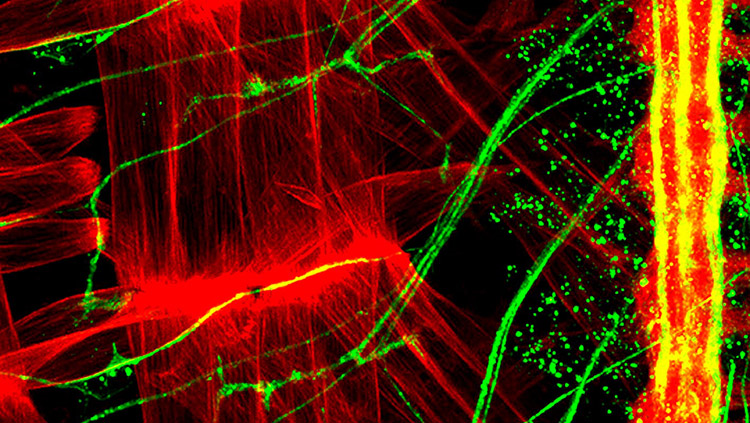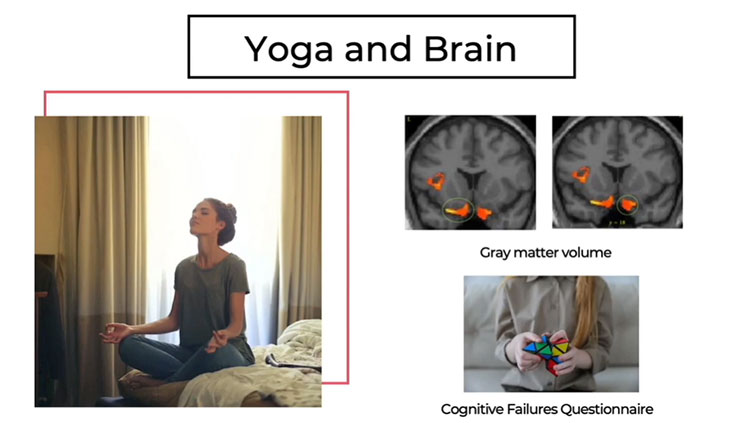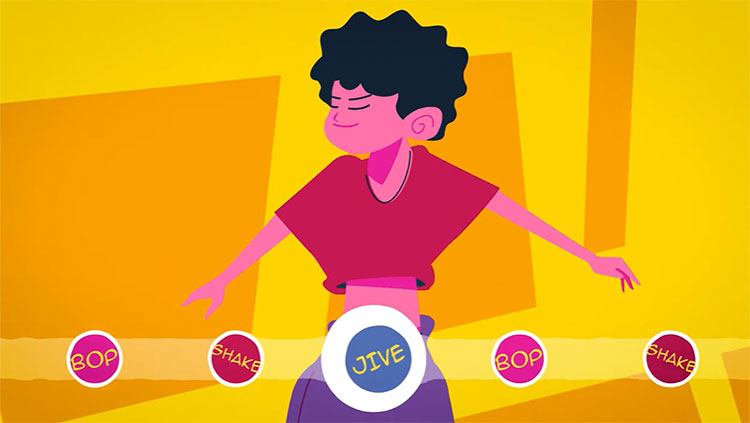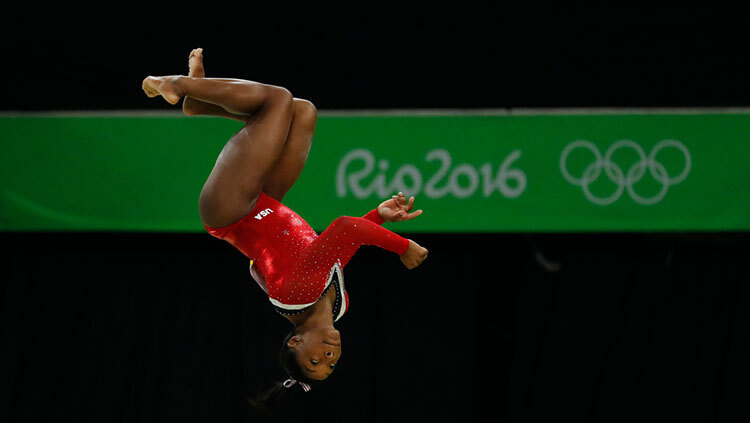A Paralyzing Strike
- Published10 Sep 2018
- Reviewed10 Sep 2018
- Author Charlie Wood
- Source BrainFacts/SfN

Afraid of snakes? Don’t worry, it’s not irrational. A snake bite is nasty business, and some — like the blue coral snake — have venom that can cause total paralysis.
In this image, the green tendrils here stretch from their sheltered origins inside this baby fruit fly’s central nervous system (yellow) and latch onto its muscles, seen here in red. Those green tendrils are the motor neurons. Like a marionette’s strings, they carry commands from the brain and convert them into actions such as looking around, walking, or in the case of flies, flying.
But the point of contact between motor neuron and muscle fiber — called the neuromuscular junction — is vulnerable. That’s where many snake venoms attack, disguised as useful chemicals that belong in the system, blocking the brain’s commands and in effect severing the strings. That disconnection can dull or even stop the organism’s movement. It takes a sequence of molecular events to go from neural impulse to muscle contraction, and scientists have identified venoms from various organisms (including snakes, wasps, and snails) targeting each step in the process.
CONTENT PROVIDED BY
BrainFacts/SfN
References
Ranawaka, U. K., Lalloo, D. G., & de Silva, H. J. (2013). Neurotoxicity in Snakebite—The Limits of Our Knowledge. PLoS Neglected Tropical Diseases, 7(10), e2302. http://doi.org/10.1371/journal.pntd.0002302
Also In Movement
Trending
Popular articles on BrainFacts.org


















